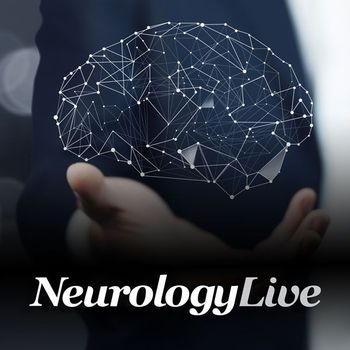
The associate professor at the University of Michigan described the ways recently published guidelines on diabetic neuropathies will change how conditions like Guillain-Barré syndrome and CIDP are managed. [WATCH TIME: 3 minutes]

The associate professor at the University of Michigan described the ways recently published guidelines on diabetic neuropathies will change how conditions like Guillain-Barré syndrome and CIDP are managed. [WATCH TIME: 3 minutes]

Over a 2-year treatment period, discontinuation rates with risdiplam were low, and observed adverse events and serious AEs resembled previously conducted studies.

A survey based on young adult college students indicated that symptoms of insomnia might buffer the association with the acute physiological effects of alcohol, in part because it may heighten the sensitivity to alcohol.

The clinical professor at the University at Buffalo discussed the complexities of using combination therapies to treat myasthenia gravis, and whether adverse events play a major role in treatment decisions. [WATCH TIME: 3 minutes]

AUPN Leading Edge Episode 4 features Rohit Das, MD, and Joseph R. Berger, MD, who discuss how neurologists are undervalued in academic and non-academic settings when their compensation is predicated on RVUs alone. [LISTEN TIME: 26 minutes]

Annualized relapse rates were elevated compared with the prepregnancy period, especially during the initial 3 months after delivery, whereas EDSS scores worsened during pregnancy and the postpartum period.

The odds of having memory worsening at follow-up after 3 years were almost 30% greater for those who exhibited deteriorating insomnia status than those who showed signs of improvement.

Similar to the recently commenced phase 2b LUMA study, BIIB122, an investigational small molecule inhibitor of LRRK2, will be evaluated in a cohort of 400 individuals with genetically mutated Parkinson disease.

The Zimmermann Professor of Neurology and Neurological Sciences and Pediatrics at Stanford University discusses the biggest takeaway from the FDA approval of Amylyx’s therapy, marketed as Relyvrio, and the availability of the treatment for patients with ALS. [WATCH TIME: 5 minutes]

Data from a systemic review suggests that the COVID-19 pandemic is associated with increased rates of subthreshold insomnia symptoms, but not with moderate or severe insomnia, among the global population.

The division chief of stroke and vascular neurology at Duke Health discussed how clinicians have typically treated poststroke motor symptoms and how technology is expanding these capabilities.

New data from the NOVA trial showed differences in the number of T2 lesions in patients with relapsing-remitting multiple sclerosis at 72 weeks of treatment with natalizumab (Tysabri; Biogen), though seemingly driven by data from only 2 participants with extreme new or newly enlarging T2 hyperintense lesion numbers.

Valproic acid, which had been associated with a variety of major and minor malformations in pregnancy, remained barely unchanged in terms of use, dropping slightly from 12.4% to 10.1% over the 5-year period.

The Zimmermann Professor of Neurology and Neurological Sciences and Pediatrics at Stanford University discussed updates in ALS research along with the need in future studies following AMX005’s (Relyvrio; Amylyx Pharmaceuticals) recent FDA approval. [WATCH TIME: 4 minutes]

A study using patient data from John Hopkins showed that rituximab treatment was associated with reduced annualized relapse rates in AQP4-IgG seropositive NMOSD and MOGAD.

The director of NYU Langone’s Alzheimer’s Disease Research Center and Center for Cognitive Neurology discussed current knowns and unknowns about the pathology of Alzheimer disease. [WATCH TIME: 4 minutes]

Joe Kardine, MS, OTR, CBIS, the clinical program manager at the Jefferson Center for Neurorestoration, discussed the influx of new neurorestorative technology and the future of treating patients with functional loss.

In a cohort of nearly 600,000 individuals, the combination of dementia diagnosis and presence of psychiatric comorbidity significantly increased the risk of suicide.

The division chief of stroke and vascular neurology at Duke Health provided insight on the nuances of poststroke neuromuscular symptoms and how they differ from other typically managed impairments. [WATCH TIME: 5 minutes]

The TRACK-TBI cohort study revealed that patients with traumatic brain injury and a GCS score of 3 to 12 had a significant increase in the accuracy of prognostic accuracy of IMPACT models.

The Zimmermann Professor of Neurology and Neurological Sciences and Pediatrics at Stanford University discusses Amylyx’s therapy that was recently approved by the FDA, and what it means for the ALS community and the global healthcare industry. [WATCH TIME: 5 minutes]

The NDA for the Supernus therapy, supported by data from the phase 3 TOLEDO study in patients with Parkinson disease, will require additional information and 6 months of further review. No additional efficacy or safety studies are required.

Here's some of what is coming soon to NeurologyLive® this week.

Enrollment for the phase 1/2 study will be partially stopped; however, all participants included in the trial, whether on AOC 1001 or placebo, are eligible to continue their current dosing regimen.

The clinical program manager at the Jefferson Center for Neurorestoration provided commentary on the state of neurorestoration and constant transformation of the space. [WATCH TIME: 3 minutes]

Test your neurology knowledge with NeurologyLive®'s weekly quiz series, featuring questions on a variety of clinical and historical neurology topics. This week's topic is insomnia.

Data from a MSbase registry on patients with multiple sclerosis show in its findings that the incorporation of the Multiple Sclerosis Severity Score improved the prediction accuracy of relapses in MS.

Findings from a study on Parkinson disease revealed that combining blood biomarkers in addition with clinical measures with prognostics modelling are associated with a more vital prediction in disease progression.

Using magnetic resonance spectroscopy, investigators observed significantly different levels of total NAA across MS and NMOSD subtypes, and a negative correlation between total NAA and disability score.

Neurology News Network for the week ending October 8, 2022. [WATCH TIME: 3 minutes]